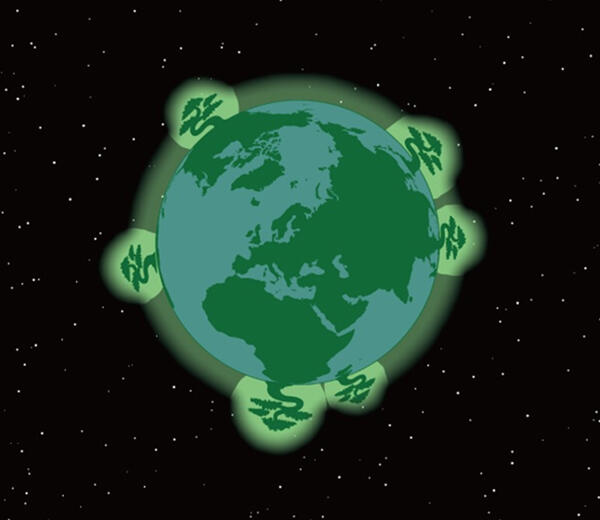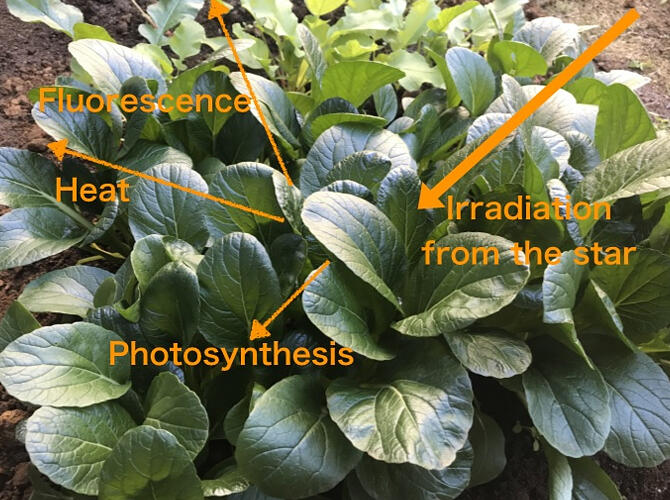The observation of the red edge (spectroscopic features of light reflected by vegetation) has been a major focus as a way of confirming whether life exists on exoplanets, but Yu Komatsu of the Astrobiology Center, National Institutes of Natural Sciences, and his colleagues have found that photosynthetic fluorescence can be used as a new biosignature. The group's research was published online in The Astrophysical Journal.

Credit: Astrobiology Center
Light energy absorbed from sunlight through photosynthesis is either used for photochemical reactions or released as fluorescence and heat. This fluorescence as well as the red edge has been observed through remote sensing of the Earth and represents the amount of vegetation on the planet's surface. The fluorescence is used to estimate more detailed photosynthetic activity, such as stress conditions.
In their study, the researchers simulated how fluorescence appears in the spectra of a Sun-like star and a terrestrial planet orbiting two M-type dwarf stars (GJ667C and TRAPPIST1) respectively, assuming different planetary atmospheres and surface conditions. They used two light absorption and fluorescence spectra of photosynthetic organisms: typical vegetation with chlorophyll a and b (Chl) and red bacteria with bacteriochlorophyll b (BChl), and fluorescence intensity was determined by scaling appropriately according to the number of photons acquired under radiation fields in the habitat. These light absorption spectra were used to calculate the leaf reflectance spectra by means of radiation transport calculations. A model was developed to treat light absorption, fluorescence and reflection coherently and how they appear in planetary spectra.
They found that in the case of BChl, in the absence of clouds or strong absorbent bodies near 1,000 nanometers, fluorescence, together with the detection of red edges, can be a biosignature to identify traces of photosynthesis. However, they also learned that using a noise model for a future six-meter aperture space telescope planned by NASA around solar-type stars would require a very long observation time to identify fluorescence.

Credit: Astrobiology Center
Ultra-cool stars such as TRAPPIST1 have strong absorption of vanadium oxide, iron hydride and potassium in the stellar atmosphere, and these absorptions result in significantly larger apparent reflectance at wavelengths where the flux from the star is small and fluorescence from the planet is emitted. This may be a good feature for future very large ground-based telescopes such as the TMT to observe fluorescence at high dispersion, but still needs to be verified.
Journal Information
Publication: The Astrophysical Journal
Title: Photosynthetic Fluorescence from Earth-like Planets around Sun-like and Cool Stars
DOI: 10.3847/1538-4357/aca3a5
This article has been translated by JST with permission from The Science News Ltd. (https://sci-news.co.jp/). Unauthorized reproduction of the article and photographs is prohibited.




